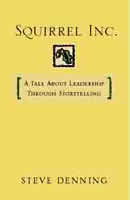I have a small retail store/boutique located in a shopping center that doubles as a local harbor. Most of our customers are local, but there is a perception among many locals that we are only for tourists. We get some tourists, but not a lot, definitely not enough to support a shopping center. We have about 25 stores and a dozen restaurants and a coffee shop. The coffee shop is packed with locals every morning and the restaurants are packed w/ locals every night. As you know getting a group together to market is like herding cats, but we do have a bit of a budget. As we are in a public harbor, the county is our landlord and they are in the process of redoing the website to attract more people. According to the marketing co. that was hired to do a survey our customers are ‘upper crust’ with incomes over $75K a yr, mostly over 50, but with a sprinkling into younger age groups. This holds true to the informal tracking I do in my store. My question is: Do you have any ideas as to how to market our harbor/shopping area to reach more locals and get them to look on us as a local attraction, not a tourist trap. I am hoping you could give ideas both for us as a group & maybe some things that individual stores could do. Most of the stores merchandise is not geared towards tourists. Right now the harbor does a Xmas open house, a whale watching festival and a tall ships festival. They have really been expanding the holiday boat parade also. These events bring a lot of people to the harbor, but many of them come with children & most people coming to the events do not come threw the stores.
###
Jay’s Answer: Offer locals-only discount. People need to show their driver’s license to prove it. This is a stronger benefit for lower-income groups, but may help.
Provide free (or discounted) meeting spaces for local meeting groups (clubs, non-profits, etc.).
You hired a marketing company to analyze your customers. Did you ask the customers, "What would make you come here more often?" It may be perception, it may be parking, it may be competition, it may be price, etc.
Support your local artists. Each month have an art show in a different store in the shopping center. The point is to get people to see the store and support the local artists at the same time.
Changing habits doesn’t happen overnight.
 People make a split-second judgment of your website. Is it “talking to them?” Is it worth their time to continue reading it? Are you getting the traffic you want? Are visitors converting to customers?
People make a split-second judgment of your website. Is it “talking to them?” Is it worth their time to continue reading it? Are you getting the traffic you want? Are visitors converting to customers?
 Maybe you’re already a member of
Maybe you’re already a member of